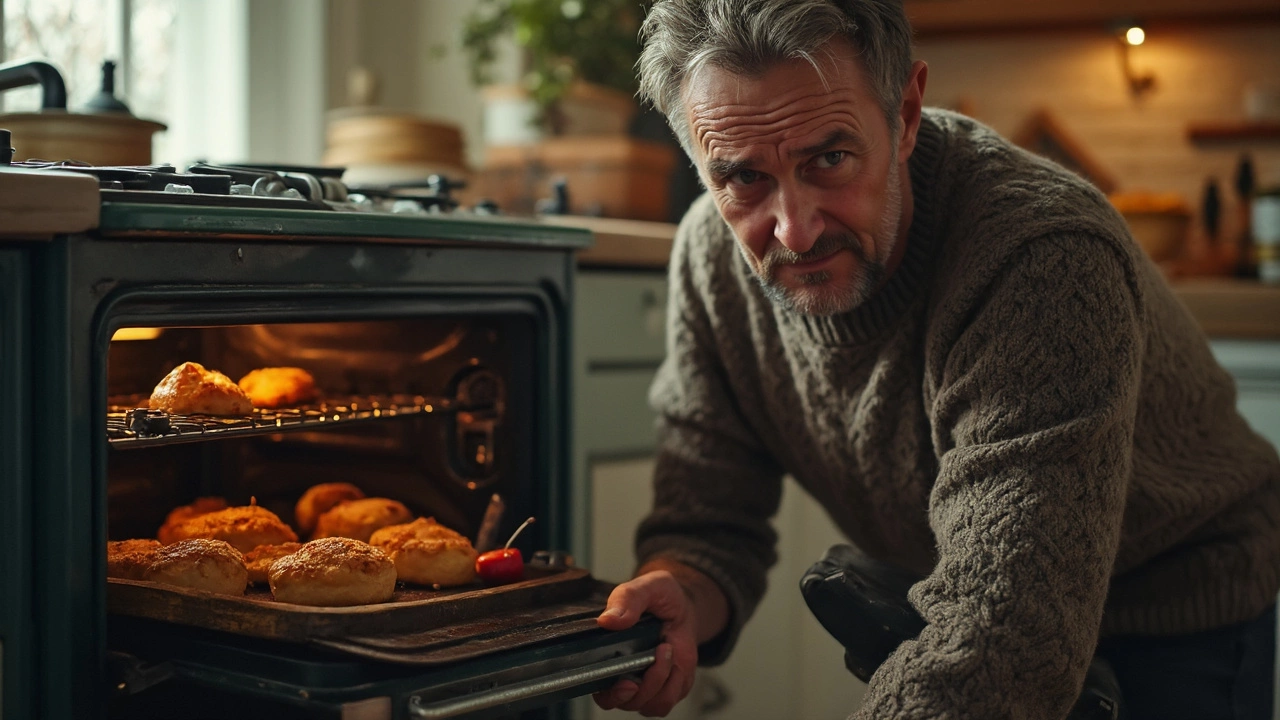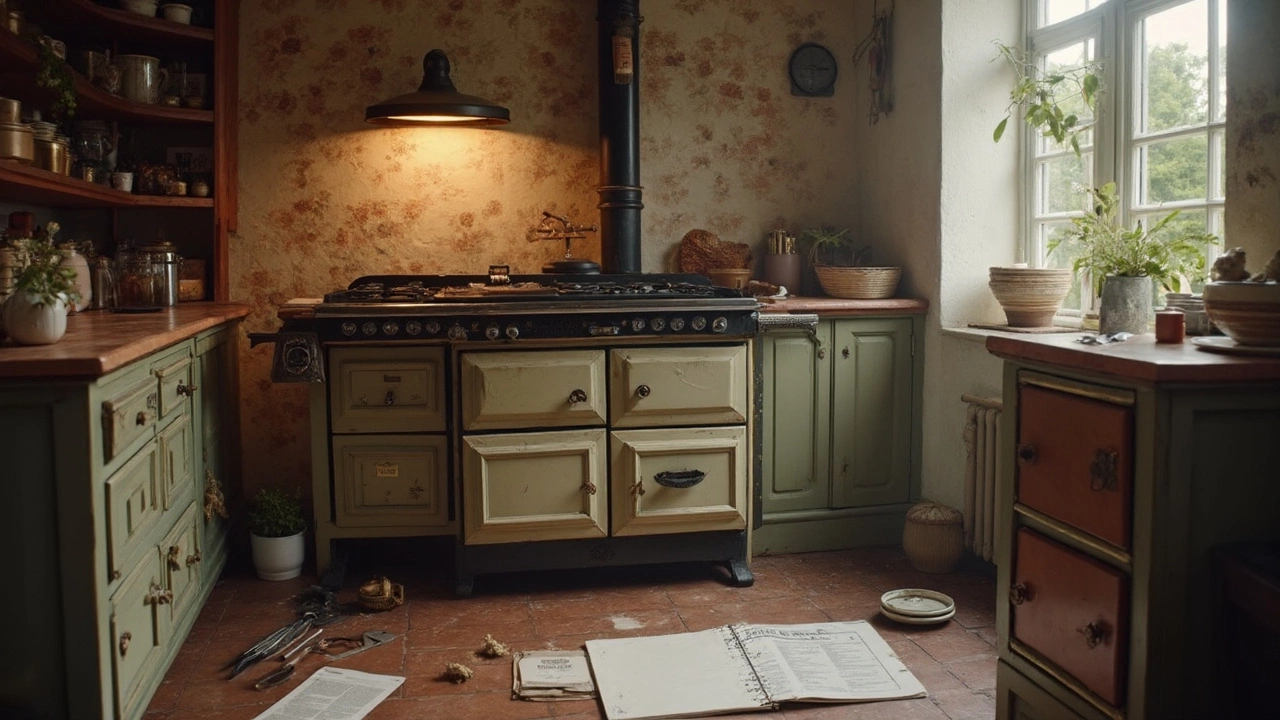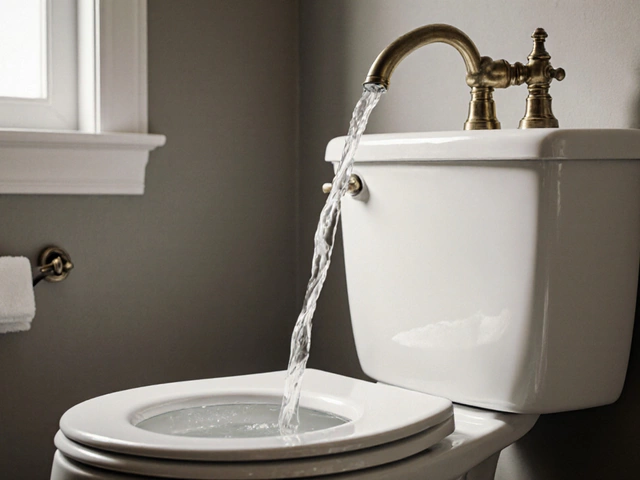When your oven starts acting up, it can really throw off your cooking game. But before you hit the panic button and call for help, consider this: many common oven problems can be fixed right at home with a little troubleshooting.
First things first, let's tackle the basics. If you're noticing uneven cooking or things just aren't heating up like they should, don't worry. These are typical issues that often have simple solutions. It might be as straightforward as a broken igniter or a faulty thermostat. But don't jump to conclusions just yet, as we'll cover some diagnostic tips soon that can help pinpoint the problem.
Remember, safety is your best ally when you're dealing with appliances. Always unplug your oven before checking internal components, and if you smell gas, that's a cue to step back and call in the professionals.
- Common Oven Problems
- Safety First: Precautions Before Starting
- Diagnosing Heating Issues
- Tackling Strange Noises and Smells
- Maintenance Tips for a Long-Lasting Oven
Common Oven Problems
Even the most reliable ovens can run into oven problems over time. Knowing what to look out for can save you a headache. Here are some of the usual suspects when it comes to oven troubles.
1. Oven Not Heating Properly
If your oven isn't heating up, or it's not getting as hot as it should, it could be due to a malfunctioning igniter or heating element. These components are crucial for making sure your food cooks evenly. To check this, see if the igniter glows, and make sure the heating elements aren't broken or burned out.
2. Uneven Cooking
Fed up with burnt edges and raw centers? This is a classic case of uneven cooking. Often, it's because your oven is either too hot or too cold in different spots. Make sure your oven racks are placed correctly and that the temperature sensor is working properly.
3. Strange Noises
Creaks, pops, and bangs can be unsettling, but they're usually caused by thermal expansion or contraction as the oven heats and cools. However, if you hear louder or grinding noises, it might be a motor or fan issue that needs checking.
4. Faulty Oven Light
It might seem trivial, but a malfunctioning oven light can be annoying, especially when you're trying to keep an eye on a cake. Typically, it's just a bulb that needs replacing, but if a new bulb doesn’t fix it, the socket or wiring might be the culprits.
5. Door Won't Close Properly
If your oven door won't shut tight, heat escape is a given, leading to inefficient cooking. Usually, the issue comes down to bad hinges, door springs, or seals. Checking and possibly replacing these parts can restore the door's functionality.
Knowing these common oven problems can give you a head start in tackling small issues before they become big ones. Don’t forget, if you ever feel out of depth, calling a professional is the safest route.
Safety First: Precautions Before Starting
Before diving into fixing your oven problems, it's crucial to prioritize your safety. Let's go through some essential precautions to keep you out of harm's way.
Power It Down
First thing's first—make sure the oven is completely turned off. Unplug it from the wall or shut off the circuit breaker to cut all power. This basic step can save you from electric shocks.
Gas Leak Awareness
If you have a gas oven, be mindful of leaks. If you smell gas, don't mess around. Evacuate the area and call the gas company immediately. Turning anything on, even a light switch, can be dangerous.
Allow for Cool Down
Before you start poking around inside, ensure the oven has cooled down after any recent use. Hot elements can cause nasty burns.
Proper Lighting and Ventilation
Work in a well-lit area so you can see what you're doing without straining your eyes. Good ventilation is also key—old food bits and dust might release odors when you open it up.
Read the Manual
Each oven model can be different, so having a quick scan through your appliance's manual can be a game-changer. There might be specific troubleshooting tips or cautions that are unique to your oven.
Have the Right Tools
Nothing's worse than diving into a repair only to find you're missing a tool. Here's a basic list to get you started:
- Screwdrivers (Phillips and flathead)
- Flashlight
- Multimeter (for checking electrical connections)
- Needle-nose pliers
Stats
Statistics show that over 60% of DIY appliance repairs fail because of skipping safety steps. Don't be part of that statistic!
By keeping these straightforward precautions in mind, you'll be in much better shape to handle whatever your oven throws at you. Stay safe and proceed with a plan!

Diagnosing Heating Issues
If your oven isn't heating properly, it can feel like you're shooting in the dark trying to figure out why. But don’t worry, we’re here to guide you through this common oven repair problem.
Check the Temperature Sensor
Your oven's temperature sensor plays a crucial role in achieving the right heat levels. First, make sure it’s not touching the oven wall, which could throw off your readings. Use an ohmmeter to check the sensor’s resistance—a healthy sensor should be at around 1000-1100 ohms at room temperature. If something seems off, it might be time for a replacement.
Investigate the Heating Elements
If your oven is electric, the heating elements might be the culprits. To see if they’re working, turn the oven on and keep an eye on them as they heat up. They should glow a bright red if functioning properly. If there’s no glow, you might need to replace a faulty element.
Gas Oven? Look at the Igniter
For gas ovens, the igniter is often the issue. A weak igniter won't open the safety valve, which means no heat. If you notice the burner doesn’t ignite after 90 seconds, it might be time to swap out that igniter.
Control Thermostat
Sometimes, the control thermostat doesn't communicate well with the heating elements or igniter. If everything else looks fine, but your oven still refuses to heat, a faulty thermostat might be to blame. Consider calling a pro for this one if you're not confident handling it yourself.
Pro Tips
Don’t forget to refer to your oven's manual. It's packed with specifics that might save you time and hassle. And one more thing—make sure the oven is plugged in and that your home’s circuit breaker hasn’t tripped. It might sound basic, but you'd be surprised!
By following these troubleshooting steps, you're likely to pinpoint why your oven isn’t heating and get it back to business in no time.
Tackling Strange Noises and Smells
Ever walked into the kitchen only to be greeted by a clinking, rattling, or downright bizarre noise while you're trying to reload the pasta bake into the oven? Strange sounds are usually indicators of something being off inside your oven.
Sounds Like Trouble: What Those Noises Mean
If you’re hearing a repeated ticking or clicking, it could be a sign of an igniter trying to light, but not quite making it. This is common in gas ovens with a faulty ignition system. On the other hand, a loud buzzing noise may mean an electrical problem, possibly with the relay or the motor. A rattling sound might just mean something inside got loose. So, pop open the oven—after it’s cooled down, of course—and make sure everything’s screwed in tight.
Dealing with Unpleasant Smells
The oven problems don’t stop at sounds—odd smells can be just as telling. If you smell gas, that's an immediate red flag. You need to evacuate and contact the gas company right away. If it’s a burning smell, give the oven a once-over. It could be grease or food residue that's a bit too toasty.
When to Call in Backup
If you've tightened all the screws yet the sounds persist, it might be time to bring in a pro. The same goes for persistent smells that don't seem to align with just a bit of old food stuck inside. And remember, some issues might seem small but can indicate bigger issues beneath the surface.
Troubleshoot when you can, but don’t hesitate to get expert help if you’re scratching your head or if things feel unsafe.

Maintenance Tips for a Long-Lasting Oven
Keeping your oven in tip-top shape isn't just about fixing problems as they pop up; it's about preventing them in the first place. Here's how to make sure your oven goes the distance.
Regular Cleaning
A clean oven is a happy oven. Make it a habit to wipe down spills and crumbs regularly. Not only does this keep your oven looking new, but it also prevents smoky odors and reduces the risk of fires. For a good deep clean, take out the racks and scrub them separately—just make sure they're completely dry before putting them back.
Check the Gaskets
The door gasket, or seal, is crucial for trapping heat inside the oven. If it's worn out or cracked, your oven might not heat properly. Give it a quick check every few months and replace it if it's damaged. It might seem small, but a tight seal makes a big difference.
Inspect and Calibrate the Thermostat
If your oven isn’t heating evenly, it might be due for a thermostat calibration. An inaccurate thermostat means your culinary creations might turn out overdone or undercooked. You can often do this yourself with a good oven thermometer; just follow the manufacturer's instructions, or call in an expert if you're unsure.
Tidy Up the Heating Elements
For gas ovens, clean out the igniters to make sure they’re free of debris. For electric models, ensure that the elements are not warped or coated with grime. This doesn’t just improve efficiency—it extends the life of your oven immensely.
Keep Vents Unblocked
Oven vents release moisture and excess heat, so make sure they’re clear. Obstructed airflow can mess with your oven’s performance, leading to uneven baking and potential overheating.
Regular Maintenance Check-Ups
Once in a while, it's good to have a professional look over your trusty kitchen companion. They can spot wear and tear you might miss and ensure everything is up to par. Consider this a yearly requirement. Think of it like a health check-up, just for your oven!
By following these oven repair and maintenance tips, you can keep your oven running smoothly for years to come. This not only saves you money on repairs but also ensures your baking delights are always cooked to perfection!





